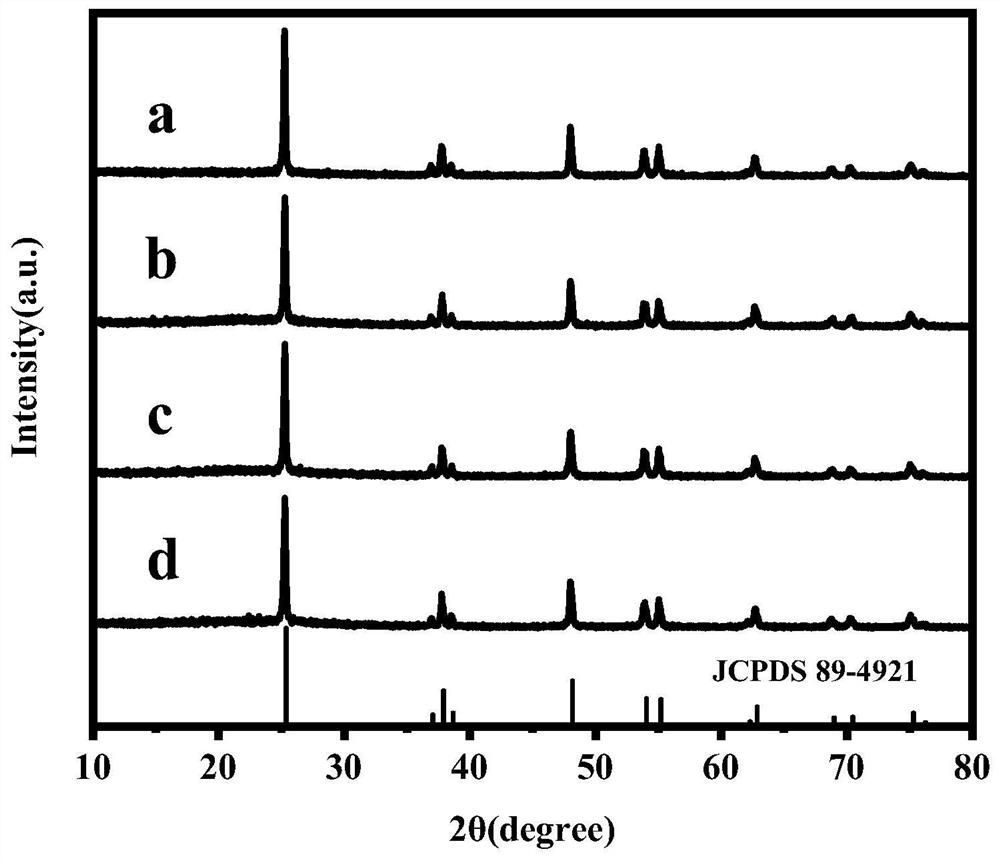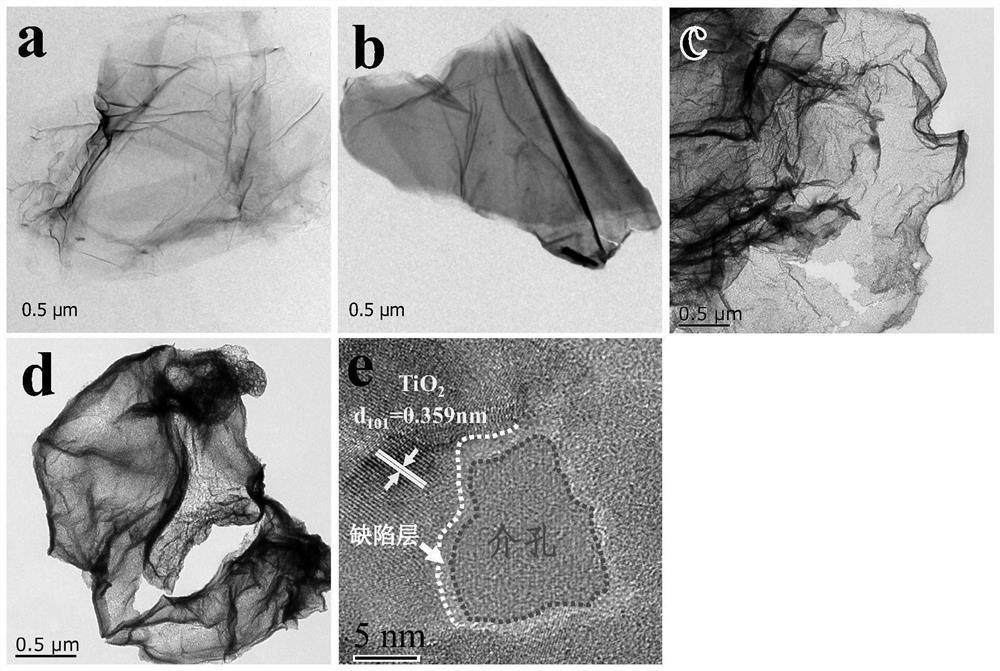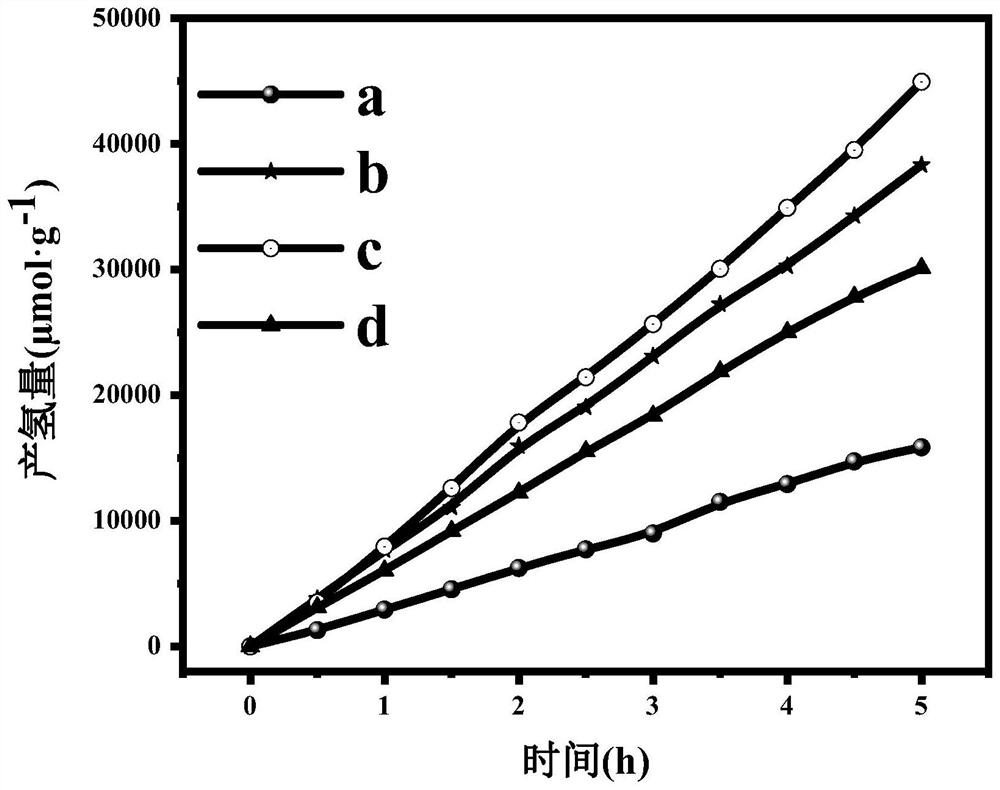2D porous TiO2 nanosheet rich in surface defects and preparation method of 2D porous TiO2 nanosheet
A nanosheet and defect technology, which is applied in the field of 2D porous TiO2 nanosheets with rich surface oxygen vacancies and their preparation, can solve the problems of low photocatalytic efficiency and the like, and achieve the effects of increasing defect concentration, improving performance and low cost
- Summary
- Abstract
- Description
- Claims
- Application Information
AI Technical Summary
Problems solved by technology
Method used
Image
Examples
Embodiment 1
[0031] (1) Prepare graphene oxide GO powder for subsequent use:
[0032] Add 1.5g of graphite powder into a 500mL beaker, then add 180mL of 98% H 2 SO 4 and 20 mL of 85% H 3 PO 4 Mix and slowly drop into the above beaker with gentle stirring. The solution was transferred to an oil bath and heated at 50°C. Subsequently, 9g KMnO 4 Disperse in the mixed solution in batches and keep the reaction system at 50±1°C. After stirring vigorously for 12 h under sealed conditions, slowly inject 30% H from the bottom of the beaker 2 o 2 And keep the reaction solution at 50±1°C. The solution was observed to change in color from black to purple to bright yellow until no more bubbles were produced. The obtained sample was rinsed with distilled water and centrifuged until the pH value was 5-6, and the obtained solid was freeze-dried and stored in a dry box. .
[0033] (2) Preparation of GO@Ti(OH) 4 Composite, spare:
[0034] 90 mg of GO was dispersed in 180 mL of absolute ethanol a...
Embodiment 2
[0040] Step (1) and step (2) and step (3) of the present embodiment are identical with embodiment 1;
[0041] (4) Preparation of 2D porous TiO rich in surface defects 2 Nanosheet material:
[0042] The 2D porous TiO prepared in step (3) 2 The nanosheets were calcined at 500 °C under a reducing atmosphere (90 vol.% argon and 10 vol.% hydrogen) for 4 h to obtain 2D porous TiO rich in surface defects 2 Nanosheets. The heating rate is 2°C / min
Embodiment 3
[0044] Step (1) and step (2) and step (3) of the present embodiment are identical with embodiment 1;
[0045] (4) Preparation of 2D porous TiO rich in surface defects 2 Nanosheet material:
[0046] The 2D porous TiO prepared in step (3) 2 The nanosheets were calcined at 500 °C under a reducing atmosphere (90 vol.% argon and 10 vol.% hydrogen) for 6 h to obtain 2D porous TiO rich in surface defects 2 Nanosheets. The heating rate is 2°C / min
PUM
 Login to View More
Login to View More Abstract
Description
Claims
Application Information
 Login to View More
Login to View More - R&D
- Intellectual Property
- Life Sciences
- Materials
- Tech Scout
- Unparalleled Data Quality
- Higher Quality Content
- 60% Fewer Hallucinations
Browse by: Latest US Patents, China's latest patents, Technical Efficacy Thesaurus, Application Domain, Technology Topic, Popular Technical Reports.
© 2025 PatSnap. All rights reserved.Legal|Privacy policy|Modern Slavery Act Transparency Statement|Sitemap|About US| Contact US: help@patsnap.com



